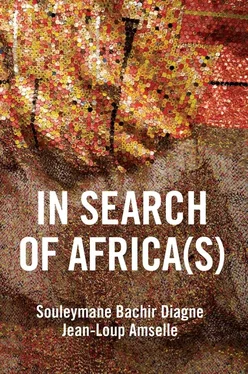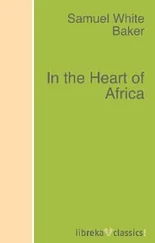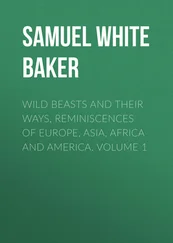An analysis of certain aspects of Merleau-Ponty’s work demonstrates that considering certain societies as unfinished, owing to their occupying an earlier phase of the history of humankind, and viewing them in an ahistorical way, also turns this defect into a quality, a certain soulfulness that might be able to breathe fresh life into an enfeebled, withered West. All the ambiguity of what is called the ‘reversal of the stigma’ (the stigma of ‘Négritude’ in particular) is summed up by this episode in the history of thought, and it is the same ambiguity that we find in certain aspects of the various different types of postcolonialism. 24It is easy to understand why the work of Merleau-Ponty, who championed Lévi-Strauss and was attentive, for better and for worse, to exotic otherness, managed to seduce Diagne.
Emmanuel Levinas is also a major philosopher on whom Diagne relies to develop his idea of the universalism of translation. It should be borne in mind that Levinas’s particularly rich and complex work combines, in a contradictory way, both a hymn to cultural diversity and a vision, or conception, inspired by Platonism. On the one hand, what Levinas acknowledges in Greek philosophy is a superiority of the (personal) other ( autrui ) over being, of ethics over ontology. For him, the ‘Greek’ is the man open to all seas, so that ‘the Good is a matter more of the delta than the source: it is the Greek element, also a source in its own way, but the pre-eminent model of openness, interpretation and infinite translatability’. 25So the universality of the ‘Greek philosopher’ is the place where all cultures can potentially overlap and be translated into one another. Levinas thus presents us with the hypothesis of a de-Westernized, de-Platonized world, one that is not subject to the affirmation of the human regardless of culture and history, in a word, de-moralized . It is this relativist conception of culture, as expressed in some of Levinas’s works, which Diagne embraces.
But, on the other hand, in Humanism of the Other , a book which plays a major role in Diagne’s argument, Levinas follows another line of thought, one that is strictly Platonic:
The saraband of innumerable and equivalent cultures, each justified within in its own context, has created a world that is certainly de-Westernized, but it is also a world that is dis-oriented. To see the meaning of a situation which precedes culture, to perceive language from the revelation of the Other […] is to return to Platonism in a new way. 26
After opening Greek philosophy up to the plurality of cultures, Levinas therefore dismisses cultural relativism and returns to what he refers to as the Other ( Autre ), the figure of the Divine that takes shape on the face of the Other-as-person ( Autrui ), a figure which in fact resembles the figure of the One. In Levinas, the overarching universal actually pre-exists what he somewhat condescendingly calls the ‘saraband’ of cultures, the infinite shimmer of cultural diversity that in itself bears no real meaning. For our philosopher, this infinite wealth, this infinite diversity, in short the ‘noise’ that the cultures of the world make in their mad saraband, is an embarrassment for the serenity which should preside over our reflection on, and quest for, Being. For the author of Humanism of the Other , who constantly plays on the difference between ‘other’ and ‘Other’, the philosophy of Being is prior and superior to anthropology, in the sense that anthropologists give this term.
For Diagne, cultural diversity, the infinite profusion and shimmer of all the cultures of the world, cannot be conceived as a ‘saraband’ – at best, a lascivious oriental dance, at worst (and this is doubtless the meaning intended here by Levinas), a way of making a noise, kicking up a racket. This is not Diagne’s view: he sees no contradiction between the quest for the universal and the appreciation of cultural diversity. Indeed, while he rejects ‘overarching universalism’ as understood by Merleau-Ponty, that is, the search for categories or structures valid at all times, in all places and for all people – categories derived from the questions about kinship or sorcery that the anthropologist forces onto his or her informers or that the West seeks to force onto the rest of the world (in the guise of human rights) –, he nevertheless declares himself be a staunch defender of universalism. But, for Diagne, this universalism is based on the possibility of a translation, that is, on the infinite translatability of all cultures into one other. So it is paradoxically in the dimension of cultural relativism that his quest for universality lies, as the purpose of his approach is to find ‘common ground’ for all cultures on an empirical basis.
To this end, Diagne defines two kinds of translations: a vertical translation and a horizontal translation. The former concerns the reception of the suras of the Qur’an by the prophet Muhammad, this revelation being conceived as a translation of the divine language. The latter relates to the translation of different cultures and languages into one another. Taking into account the problem raised by the principle of the former kind of translation for anyone who is not a believer, we may wonder if the latter kind of translation does not benefit, in its optimism, from the truly religious posture of the former, to some extent as happens in Leibniz’s ‘Monadology’ of 1714. 27Indeed, unlike such writers as Édouard Glissant, François Jullien and Barbara Cassin, Diagne does not postulate any ‘opacity’ or ‘untranslatable’ residue underlying the relationship between different cultures: in his view, every culture is in principle commensurable, understandable, assimilable by any individual from another culture. 28
This first difficulty is compounded by the question of whether this universalism of translation is based on the illusion of the separate purity of each culture. In other words, it could be that the infinite cultural diversity of the planet as it has been collected over the centuries by travellers, conquerors, missionaries, colonial administrators and ethnologists is actually, in the words of Eric Hobsbawm and Terence Ranger, an ‘invention of tradition’. 29
This desire to put different cultures on the same level paradoxically leads to hyper-relativism. Apart from the question of postcolonialism or decolonial pluriversalism, it leads to a whole swathe of contemporary anthropology tilting towards ecological and anti-speciesist hyper-relativism, a shift that is mainly carried out by disciples of Lévi-Strauss who have abandoned that aspect of his work that is properly focused on universalism (notably The Elementary Structures of Kinship ) and who are now engaged in ‘perspectivism’, a kind of ‘multinaturalism’ where the aims of the jaguar (the prey) are posed as equivalent to the aims of the Amazonian hunter pursuing it. 30Even though Diagne is not directly connected to this trend, his ecological perspective and hyper-relativist tendencies are part of the same zeitgeist.
The old cultural relativism of American anthropology to which Lévi-Strauss was linked is thus put on the back burner, since man is no longer conceived, as he was by Descartes, as ‘the master and possessor of nature’; rather, nature itself, the Earth (Gaia), becomes a living creature, in line with the Amerindian notion of Pachamama, the ‘Mother Earth’, the emblem of several NGOs and of the anti-globalization movement ATTAC – a notion that is promoted by both the philosopher Isabelle Stengers and the ‘decolonial’ sociologist Ramón Grosfoguel. 31In this perspective, the destruction caused to the environment in Central and South America is less the result of actions of multinational mining companies than an assault on ‘Mother Earth’.
Читать дальше












